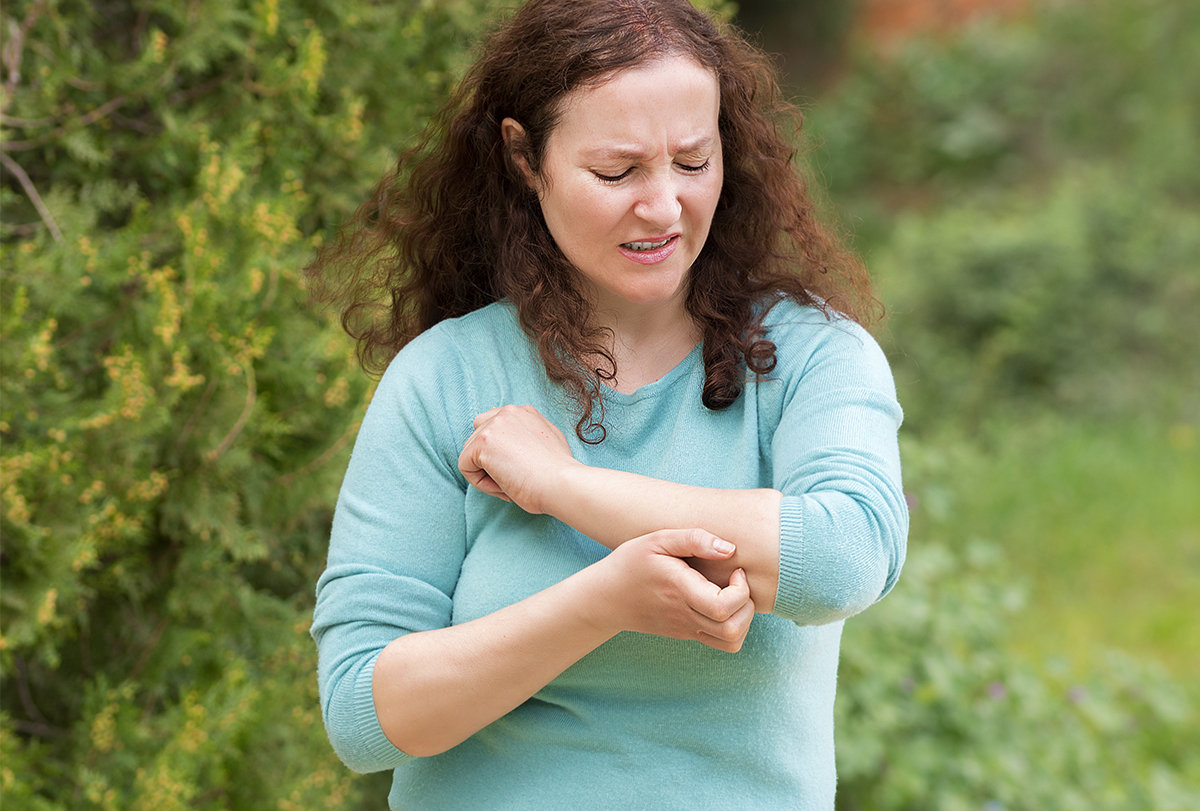In this article:
Fire ants are aggressive stinging insects indigenous to South America that later reached the shores of the United States via cargo shipments. The American south is known for its heat, scorching bright sun, vast grasslands as well as barren rocky deserts plus the absence of predatory species that make it a perfect home for these ants.

They nestle in almost any kind of soil, but prefer areas that are warm, damp, and sunny. Gradually, they erect sandy mounds on top of their nest which houses entire colonies of ants. These mounds are common in open foliage-covered spaces like lawns, meadows, agricultural land, golf courses, playgrounds, fields, and parks, but can also be found within cracked concrete, walls, on the roadside, around tress, and inside electrical boxes.
You disturb or step on these nests, then you are very likely to get stung, not just once but repeatedly, which will trigger a lot of pain and inflammation. This just goes to show that fire ants can be extremely volatile when they suspect a threat to their life or their domicile, so best to tread carefully if you are visiting potential infestation sites.
The following article will focus on managing mild to moderate reactions to fire ant sting at home as well as ways to protect yourself from such attacks in the first place.
First Aid for Fire Ant Stings

The first aid for fire ant sting consists of the following measures:
- Immediately move away from the nest or the site of attack as there may be more ants that can latch onto your skin to cause more damage.
- Be quick to remove and kill the ants clinging to your skin and clothes or they will continue stinging you. Repeated injection of their venomous toxins will lead to more severe inflammation.
- Wash the area gently with an antiseptic soap/solution and cool running water to remove any venom, dirt or germs sticking on the surface of the skin. Plus, the cool gush of water also helps soothe the piercing pain that the sting excites. You can also use alcohol-based sanitizers to disinfect the sting site.
- After washing, pat dry the area with a soft towel.
- Use a cool compress as a first line treatment to alleviate the pain, itching and swelling caused by a fire ant sting. All you have to do is wrap an ice cube in clean cotton cloth and place it on the affected skin for 10 minutes, followed by a short break, and then apply again. You can even use frozen vegetable bags or ice gel packs as a cold compress. Repeat this therapy as many times as needed during the first 24 hours of the sting. This may even help curb the spread of venom and result in a milder reaction. The application of freezing temperature constricts the underlying blood vessels to reduce swelling and numbs the nerves in the area to make you feel less pain. However, don’t make the mistake of applying the ice directly to your skin as that can result in frostnip.
- Resist the urge to scratch or scrape the sting site no matter how itchy it gets. The friction from your nails can rupture the skin further. Plus, your fingers carry a lot of germs that can infiltrate the damaged skin and trigger an infection.
- Try to keep the stung body part elevated to reduce blood flow to the sting site and thereby minimize swelling.
Home Remedies for Fire Ant Stings

The following are some home remedies to treat mild fire ant stings.
1. Aloe vera gel
Aloe vera gel is credited with anti-inflammatory properties that can soothe your red, itchy skin. (1) Simply extract the gel from a freshly cut leaf and apply it on the stung or bitten area. Let it sit for a few minutes and then rinse it with cool water.
You can also get anti itch creams from the market which contain aloe vera extracts and apply them on the sting site.
2. Oatmeal
Oatmeal is yet another anti-inflammatory agent that can provide quick relief from the itching, redness, and skin irritation caused by a fire ant sting. (2)
Fill your bathtub with lukewarm water, pour in 2 cups of colloidal oatmeal, give it a good stir, and then dip your body in the solution for at least 30 minutes. If you want, you can just soak the stung body part as well.
3. Over the counters
There are some non-prescription medications that can help manage mild, localized reactions by relieving the pain, burning and itching associated with them.
The body releases histamines and other vasoactive amines to counter the venom injected by the fire ant which contains haemolytic chemicals. It is these nitrogenous compounds that trigger inflammation at the sting site, which ultimately takes the form of various discomforting symptoms like the ones mentioned above.
You can use calamine lotions with antihistamines to calm the pruritus and reddening. You can also use 1% hydrocortisone cream for itch-relief. If the itching persists or becomes worse despite OTC treatment, visit a doctor.
Non-prescription analgesics such as acetaminophen can be used to reduce the pain. If the pustules break open, use an antibiotic ointment like polysporin to prevent opportunistic bacterial infections.
Anecdotal Remedies to Avoid
There are certain anecdotal remedies for fire ant stings that have gained some traction amongst general users and on the internet, but can actually prove counterproductive and worsen your condition.
Most of them are too harsh and can further irritate your already sensitive skin. They may have worked for some people, but are not worth the risk. Some remedies to steer clear from are:
- Apple cider vinegar
- Baking soda
- Essential oils
- Bleach water
- Aspirin
- Toothpaste
- Camphor ash
- Onion
- Witch hazel
Some Self-Care Measures

The following self-care measures can help you recover faster and prevent infections:
- Don’t scratch the sting site no matter how much it itches as this can further damage and contaminate your skin.
- In case you develop blisters over the sting site, don’t try to squeeze or pick at them as this will break open your skin allowing easy entry to infection-causing microbes while also increasing the risk of scarring. If a blister pops on its own, wash the area with soapy water and examine the skin for any signs of infection.
Ways to Prevent Fire Ant Stings

Follow the below mentioned measures to prevent getting stung by fire ants:
- Keep your shoes on when playing in areas that could have fire ant mounds. Wearing socks can provide your feet an additional layer of protection. These ants may find their way into your footwear, but won’t be able to bite or sting through the socks. Another pro-tip is to tuck your pants into socks or boots.
- Never fiddle with a fire ant mound as these aggressive pests can launch a collective attack at the slightest inkling of danger to their life or habitat.
- Children play in the outdoors where they can stumble upon a possible fire ant colony and run the risk of getting stung if they aren’t careful enough. This is why it is important to give them a proper lesson about identifying fire ant nests and staying away from them.
- If you spot a fire ant mound near or inside your home, get a professional exterminator to remove it from your premises rather than spraying insect repellents which have proven to be completely useless against these creatures.
- Wear gloves while working in the garden.
- People who develop a severe reaction after getting stung by a fire ant for the first time will most likely have similar or worse symptoms if you get stung for a second time. Same goes for people who are allergic to fire ant venom, and run the risk of developing anaphylaxis in response to it. If this is the case with you, always carry an epinephrine auto-injector that can promptly curb the reaction if and when you get stung again. Plus, people who are allergic to fire ant venom are also advised to wear medical identification jewellery listing their allergy.
- Your pets may also bring in fire ants. So, keep a watch on them.
- If you live in an area that is prone to fire ants, exercise caution while picking up anything from the ground as it may be harbouring ants underneath it.
Final Word
The severity of the reaction to a fire ant sting can vary from person to person and has to be treated accordingly. In mild cases, the inflammation tends to be localized to the sting area and subsides on its own. (3)
However, if your symptoms are giving you grief, you can resort to medical treatment, home remedies, and some self-care measures to gain relief and promote faster recovery. Some people may develop severe systemic reactions and even anaphylactic shock that can prove life-threatening if not treated immediately and properly.

- Was this article helpful?
- YES, THANKS!NOT REALLY


